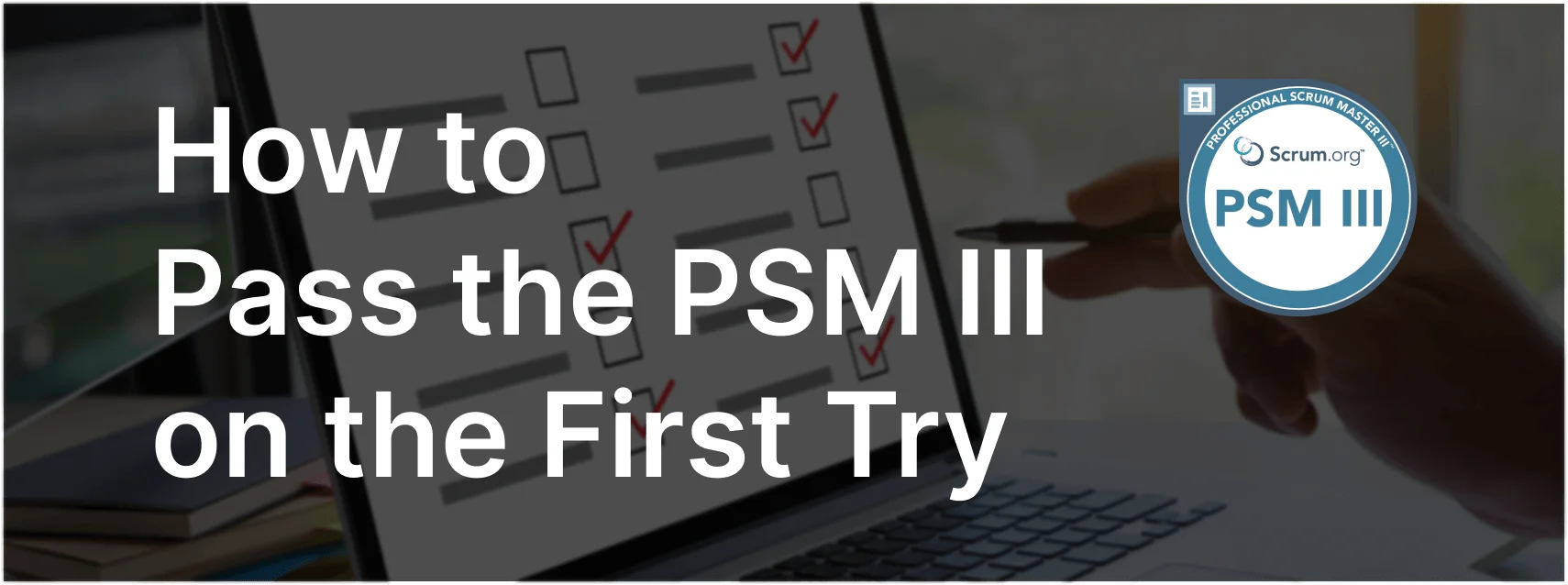Applying Scrum in a One-Person Start-Up: Advantages and Disadvantages
Scrum is designed to foster collaboration and improve team efficiency. However, when a single individual takes on all the accountabilities within a Scrum framework, the dynamics change significantly. It’s essential to understand the unique challenges and benefits that arise in such a situation.
Exam Question
A start-up is a one-person Scrum Team. The individual takes on the accountabilities of Scrum Master, Product Owner, and Developer. You are a Scrum Master who is a friend of this person. They ask you for your opinion on how they are operating.
Provide one advantage and one disadvantage of applying Scrum in this situation.
What guidance or recommendation would you offer to your friend?
Explanation
Advantage
- Streamlined Decision-Making:
Description: With only one person handling all the roles, decisions can be made quickly without the need for lengthy discussions or approvals from multiple stakeholders. This can lead to faster execution and the ability to pivot swiftly in response to market changes or new insights.
Example: If the individual identifies a new market opportunity, they can immediately prioritize relevant tasks without waiting for consensus from a team, enabling rapid response to market demands.
Disadvantage
- Limited Perspective and Feedback:
Description: One of the core strengths of Scrum is the collaborative nature of the team, where diverse perspectives and continuous feedback help improve the product and process. In a one-person Scrum Team, the lack of differing viewpoints can lead to blind spots, missed opportunities, and potential biases in decision-making.
Example: Without input from others, the individual might overlook critical flaws in the product or miss innovative ideas that could arise from a team brainstorming session.
Guidance and Recommendation
- Seek External Feedback:
Description: Even though the start-up operates as a one-person Scrum Team, it’s crucial to find ways to incorporate external feedback into the process. This could involve regularly consulting with mentors, potential customers, or industry peers to gain different perspectives and validate decisions.
Recommendation: Encourage your friend to set up regular feedback loops with trusted advisors or customers. This can help simulate some of the collaborative aspects of a traditional Scrum Team and ensure that the product development remains aligned with market needs and standards. - Balance Roles Carefully:
Description: Juggling multiple roles can be challenging and may lead to conflicts of interest or burnout. It’s important for your friend to clearly define boundaries between the different accountabilities and manage their time effectively.
Recommendation: Suggest that your friend establishes a clear schedule or set of practices that help them switch between the roles of Scrum Master, Product Owner, and Developer. This might involve dedicating specific times of the day to each role to ensure that they are giving adequate attention to each responsibility.
Relevance to the PSM III Exam
Understanding the flexibility and adaptability of Scrum, even in non-traditional setups like a one-person Scrum Team, is critical for advanced Scrum practitioners. The PSM III exam may explore scenarios where Scrum is applied in unconventional ways, and knowing how to navigate these situations effectively demonstrates a deep mastery of Scrum principles.
Key Takeaways
- Streamlined Decision-Making: A one-person Scrum Team allows for quick decisions, which can be advantageous in a fast-paced start-up environment.
- Limited Perspective: The absence of a team means missing out on diverse viewpoints, which can be a significant disadvantage.
- External Feedback: Regularly seeking external input can help mitigate the lack of internal collaboration and ensure that the product remains on track.
- Role Management: Balancing the various roles is essential to avoid conflicts of interest and prevent burnout.
Conclusion
While operating as a one-person Scrum Team can offer certain efficiencies, it also comes with challenges, particularly in terms of missing out on collaborative feedback and managing multiple roles. By seeking external perspectives and carefully managing their time and responsibilities, your friend can better leverage Scrum principles to succeed in their start-up venture. For more insights into Scrum practices and preparing for the PSM III exam, visit our Scrum Master PSM III™ Exam Prep.



